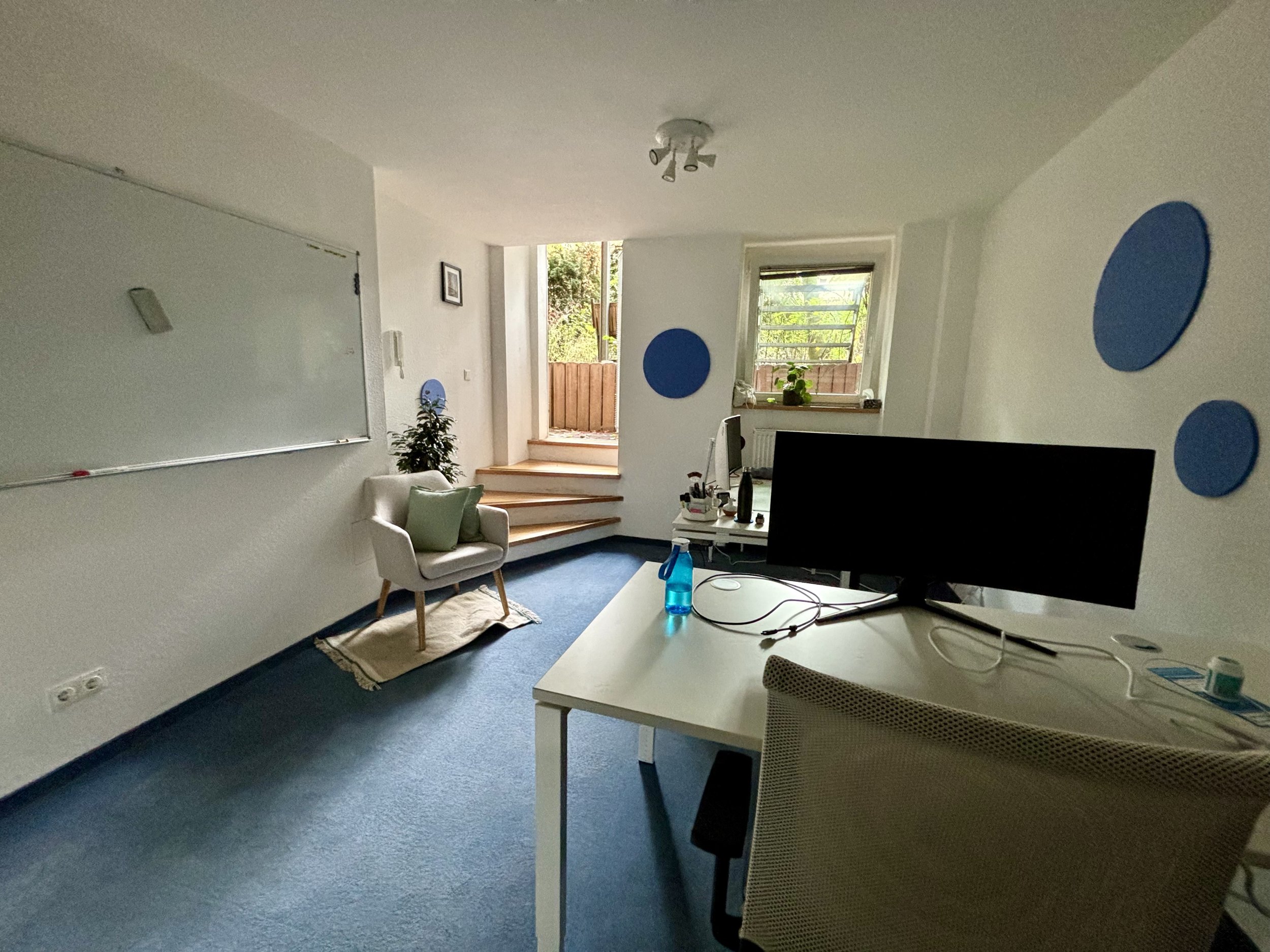Why Did We Move to a New Office in the Age of Remote Work?
After the pandemic, the traditional work landscape underwent a seismic shift, with remote work emerging as a prominent contender to the conventional office setup. The advantages of each approach are significant, and there is a spirited debate about which is superior. Where do Contextual Solutions stand in this debate?
Zionskirchplatz, Berlin
The advantages of remote work and office work
Remote work has become immensely popular for several compelling reasons. One of the standout advantages it affords employees is the flexibility it provides. With the freedom to choose their work environment, individuals can tailor their surroundings to maximize productivity, resulting in improved work-life balance. This flexibility is especially beneficial for those with familial responsibilities or personal commitments that may otherwise be challenging to manage in a rigid office setting.
Moreover, removing daily commutes from daily schedules is a notable perk of remote work. The time and energy saved by not having to navigate traffic or public transportation contribute to enhanced well-being and increased availability for personal and professional pursuits.
From an organizational perspective, remote work opens the doors to a global talent pool, enabling companies to tap into diverse skill sets and perspectives from around the world. At Contextual Solutions, we have genuinely enjoyed tapping into the international pool of talents and working with experts from Argentina and Canada to Mallorca while sitting in a co-working space in Berlin (Factory Mitte).
Challenges of remote work
Remote working systems are not without their challenges. Although we have been advocating remote work from day one at Contextual Solutions, we have started experiencing the challenges firsthand, especially in the past year. The potential for feelings of isolation and a lack of team cohesion can arise when employees are physically distant from their colleagues. We have observed this distance making the onboarding process of new employees harder, especially when it came to the less senior team members. Also, combined with the general decrease in motivation, the distance became more complex to navigate.
On the flip side, the office environment offers unique advantages that are deeply ingrained in the fabric of traditional work culture. The physical presence of employees in a shared space fosters a sense of belonging and facilitates spontaneous communication, nurturing a cohesive organizational culture. Face-to-face interactions can expedite decision-making processes and promote a more immediate exchange of ideas, which may be crucial for certain collaborative tasks.
Moreover, the office provides a structured routine that can benefit individuals who thrive in a defined work environment. Separating professional and personal spaces helps establish clear boundaries, allowing employees to switch between work and leisure more effectively. Additionally, the office setting is conducive to mentorship opportunities and the organic exchange of knowledge, fostering professional development through direct engagement. As employers, we have seen the need to offer both options since all experts have different workplace needs to unleash creativity.
Striking a Balance
After working fully remotely for more than three years, we had to face the truth. Regardless of how successful the collaboration tools are, the informal interactions and spontaneous collaboration in an office setting may be harder to replicate in virtual environments, impacting team dynamics and camaraderie.
Moving to an entirely onsite structure was not an option for us. Bringing international talent and know-how together is the core of our value proposition while managing our clients' international teams and outsourcing providers, and such talent is usually on the move. Therefore, we decided to go hybrid! After all, , a nuanced perspective suggests that the optimal solution lies in a hybrid model that combines the strengths of remote and office work.
A hybrid approach, recognizing the merits of both remote and office work, emerges as an appealing solution for companies like us. Hybrid work combines the flexibility and autonomy of remote work with the interpersonal connections and collaborative advantages of onsite work. This model accommodates diverse employee preferences and harnesses the strengths of each setting, striking a balance that enhances overall productivity and job satisfaction.
A hybrid work model, incorporating the best of both worlds, acknowledges the diverse needs of employees while optimizing organizational efficiency. As the professional landscape continues to evolve, embracing a hybrid approach may be the key to a resilient and adaptable future of work.
Therefore, we are happy to announce our new meeting space in Berlin. You can continue meeting us via Zoom or visit our new premises at Zionskirchpatz, Berlin, and meet us over coffee.
This new office will hopefully be one of the many meeting spots we plan to open globally. Stay tuned for the developments!
Our new office address:
Contextual Solutions,
Choriner Str. 10,
EG Hinterhaus (c/o Vescape GmbH),
10119 Berlin
(Please note that our official correspondence and invoice address remains the same for now).


